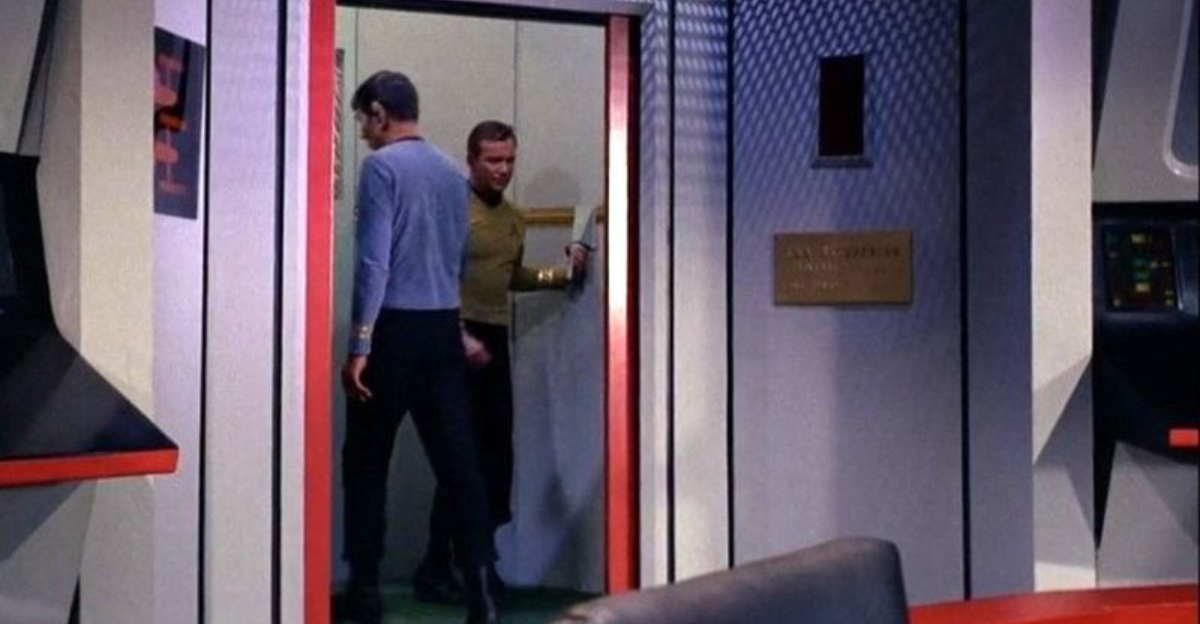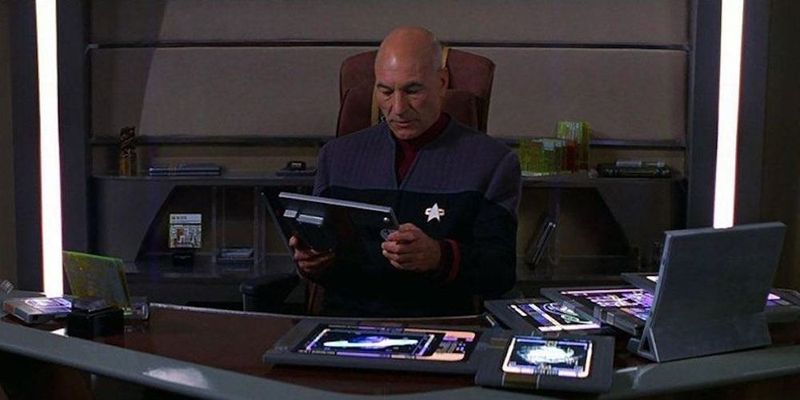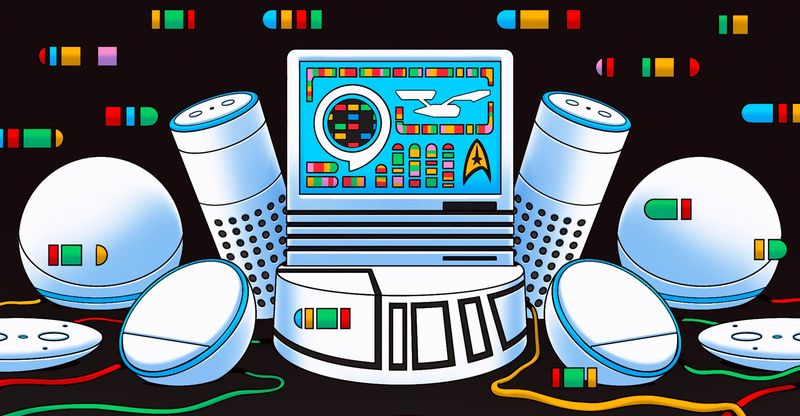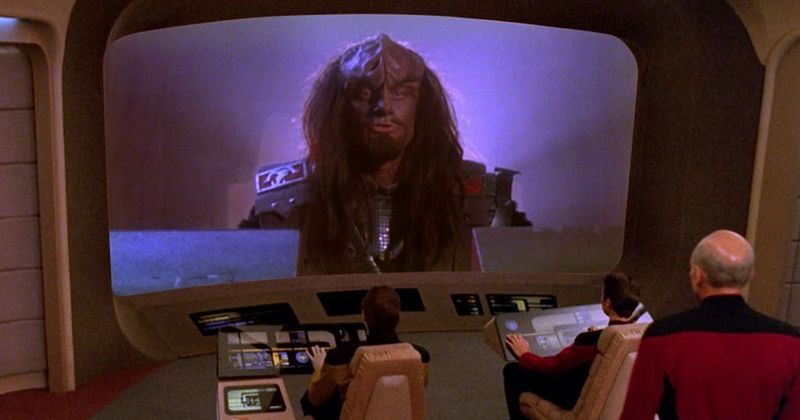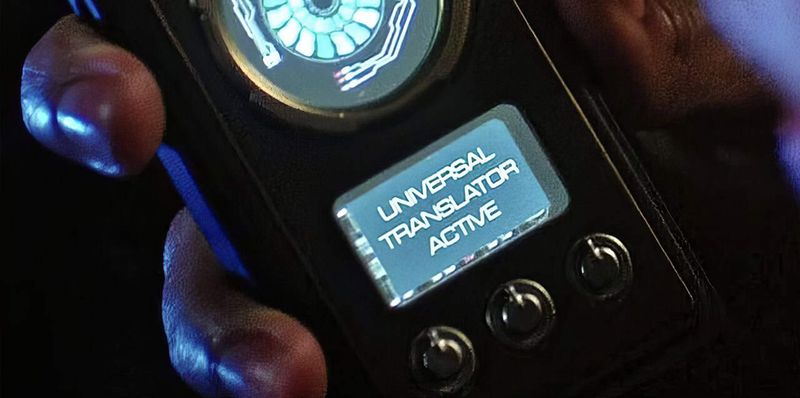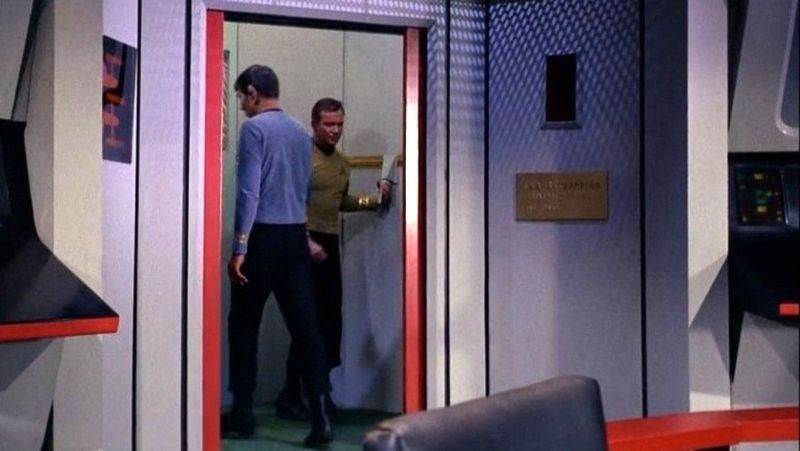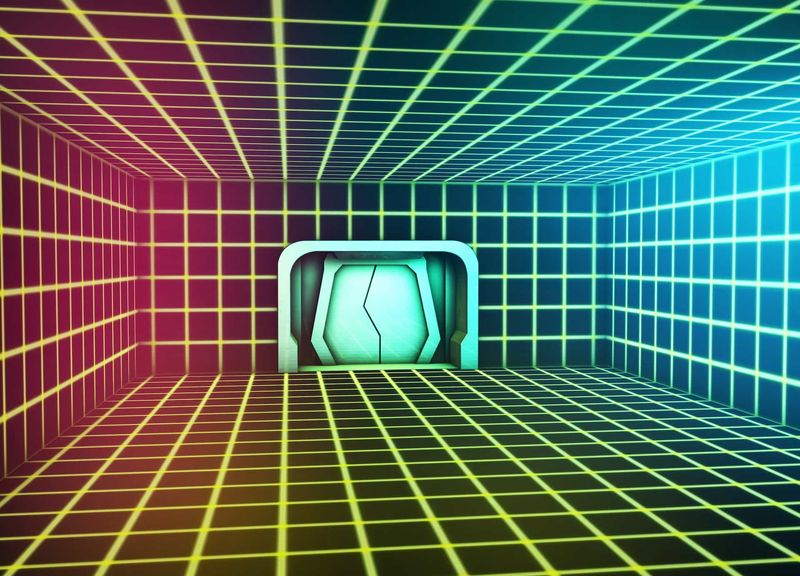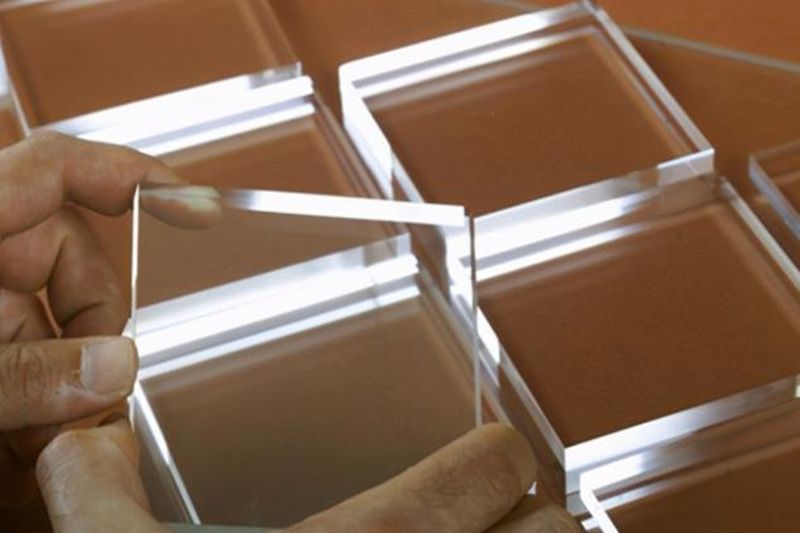Star Trek, the beloved sci-fi series, has not only entertained fans for decades but also inspired real-world technological advancements.
Many futuristic devices and concepts from the show have become realities, reflecting the innovative spirit that Star Trek embodies.
This blog post explores twelve specific technologies that transitioned from science fiction to everyday existence.
1. Tablet Computers
Imagine holding the future in your hands. Star Trek’s PADDs paved the way for today’s tablets, which have transformed how we interact with technology. With a swipe, you can explore vast libraries of information, create art, or connect with friends. Tablets are versatile, reflecting the vision of seamless digital integration.
The PADD was ahead of its time, a glimpse into a world where technology becomes an extension of oneself. Now, iPads and Android tablets are ubiquitous, fulfilling the fantasy of personalized digital access.
Did you know? The first iPad was released in 2010, marking a new era in portable computing.
2. Mobile Phones
“Beam me up, Scotty!” The iconic line from Star Trek often evokes memories of flip phones, the early predecessors to our modern smartphones. These portable communicators resembled those used by Starfleet officers, bringing science fiction into reality. They forever changed how we communicate.
From the first clamshell design to today’s smartphones, mobile phones have become indispensable tools. They embody the Star Trek vision of portable, instant communication across distances.
Fun fact: Martin Cooper, inventor of the mobile phone, was inspired by the communicators in Star Trek.
3. Voice Assistants
“Computer, what’s the weather today?” The Enterprise’s voice-controlled computer was a precursor to modern voice assistants like Siri and Alexa, revolutionizing our interaction with machines. These intelligent systems respond to spoken commands, providing hands-free convenience that feels futuristic.
Voice assistants have evolved to become more than mere tools; they are digital companions, offering information, entertainment, and control over smart homes.
Did you know? The concept of voice interaction was quite novel when Star Trek first aired, illustrating the show’s forward-thinking creativity.
4. Video Calls
Face-to-face calls without physical presence seemed like science fiction until video calls became a reality. Inspired by Star Trek’s communication screens, platforms like Zoom and FaceTime connect us across the globe.
These tools have redefined communication, making virtual meetings and gatherings an integral part of both personal and professional life. Video calls offer an interactive experience that transcends geographical boundaries.
Fun fact: The idea of video communication dates back to early science fiction, but Star Trek’s portrayal made it a tangible goal.
5. Universal Translators
Imagine speaking any language with ease. Star Trek’s universal translators inspired real-time translation apps like Google Translate, bringing the world closer together. These tools break down language barriers, fostering global understanding and collaboration.
With a simple touch, travelers can communicate across cultures, making once foreign lands feel familiar. Universal translators represent a leap toward a harmonious, interconnected world.
Did you know? Star Trek’s universal translator was a simple yet profound concept that challenged viewers to consider a future without linguistic barriers.
6. 3D Printing (Replicators)
Need a new tool or even a meal in seconds? Star Trek’s replicators envisioned this, and 3D printing has brought it to life. From prototypes to functioning objects, 3D printers are revolutionizing manufacturing and creativity.
Imagine printing custom items at home or in space, mirroring the replicators’ capabilities. This technology symbolizes the limitless possibilities of human innovation.
Did you know? The first 3D printer was developed in the 1980s, and today, we can even print human tissue prototypes.
7. Automatic Sliding Doors
Whoosh! The signature sound of Star Trek’s sliding doors is now a soundtrack of modern life, found in malls, airports, and offices. These doors, activated by sensors, offer convenience and a touch of science fiction.
Automatic doors have become a symbol of technological progress, enhancing accessibility and design in public spaces.
Fun fact: The first automatic doors were inspired by ancient Greek technology, but Star Trek popularized their futuristic appeal.
8. Tricorders
In Star Trek, tricorders were the Swiss Army knives of technology, capable of scanning environments and diagnosing patients. Today, handheld diagnostic devices aim to emulate these capabilities, providing multifunctional medical solutions.
Imagine doctors diagnosing patients with a single, compact tool. Tricorders represent the dream of portable, efficient healthcare.
Did you know? Several projects, like the Scanadu Scout, work toward realizing the tricorder’s vision, blending science fiction with medical innovation.
9. Hyposprays
Needle-less injections once seemed futuristic, but Star Trek’s hyposprays inspired jet-injector systems used today. These devices administer medication without needles, offering a painless alternative for patients.
Hyposprays have influenced the development of modern medical technology, highlighting the importance of patient comfort and efficiency.
Fun fact: Jet-injection technology dates back to the 1940s, but Star Trek popularized the concept in a medical context.
10. Augmented Reality & Virtual Reality
Step into another world with VR and AR technology, reminiscent of the Star Trek Holodeck. These immersive experiences offer endless possibilities, from gaming to education and beyond.
Virtual reality transports users to new realms, enhancing creativity and learning in captivating ways. The Holodeck was a visionary concept that now influences entertainment and industry.
Did you know? The Oculus Rift, a pioneer in VR, was released in 2016, opening new dimensions of virtual exploration.
11. Transparent Aluminum
Transparent aluminum, once a fictional material in Star Trek, is now a reality. Known as aluminum oxynitride (ALON), this material combines transparency with strength, offering applications in military and industrial fields.
Imagine a window as strong as steel. Transparent aluminum represents the blending of imagination with scientific achievement.
Fun fact: “Star Trek IV: The Voyage Home” showcased this innovative concept, sparking interest in developing such materials.
12. Space Tourism
Star Trek inspired dreams of exploring the final frontier, and space tourism is turning that dream into reality. Companies like SpaceX, Blue Origin, and Virgin Galactic are pioneering civilian space travel, opening the cosmos to adventurous explorers.
Imagine witnessing Earth from above, a perspective once reserved for astronauts. Space tourism represents the democratization of space exploration.
Did you know? The first commercial spaceflight took place in 2001, marking a new era in human exploration of space.
